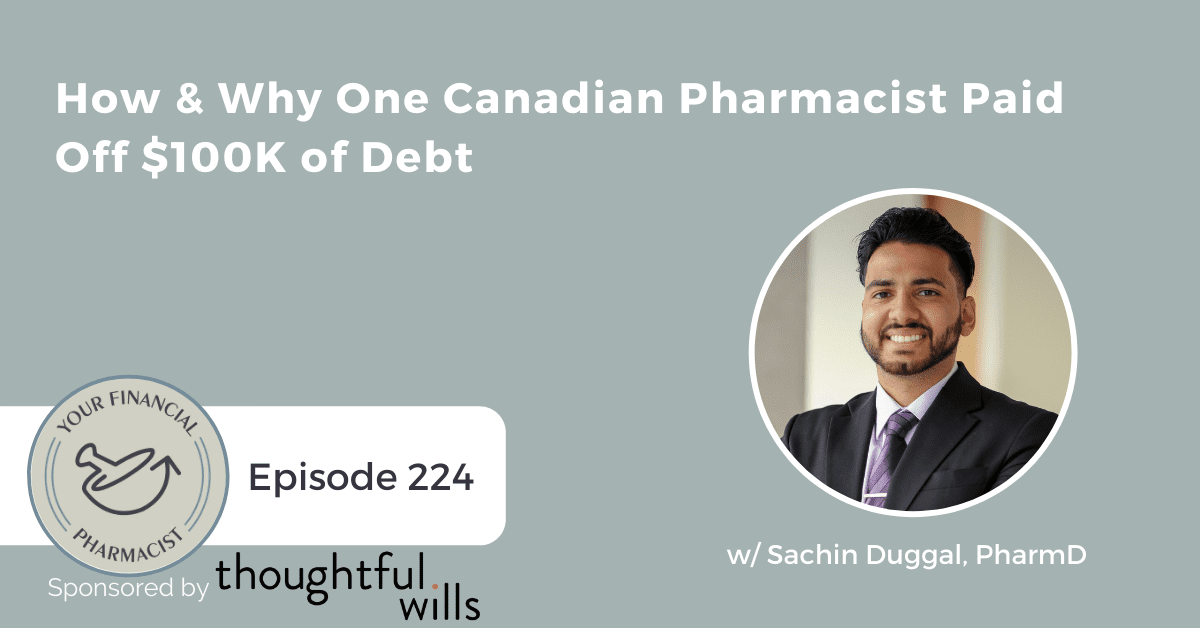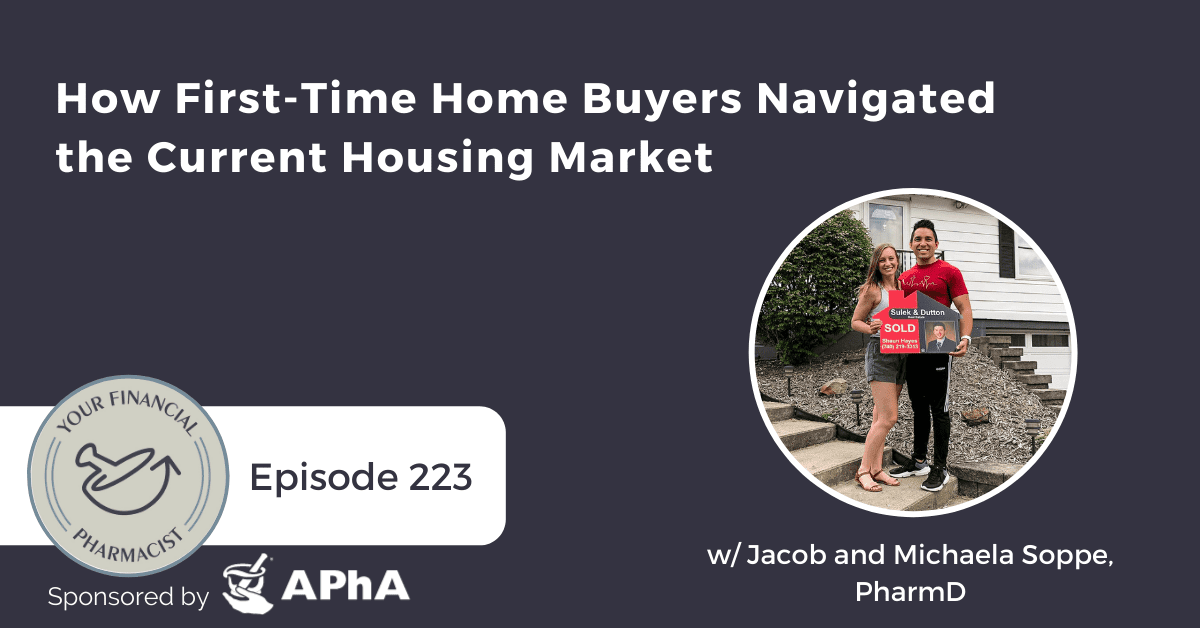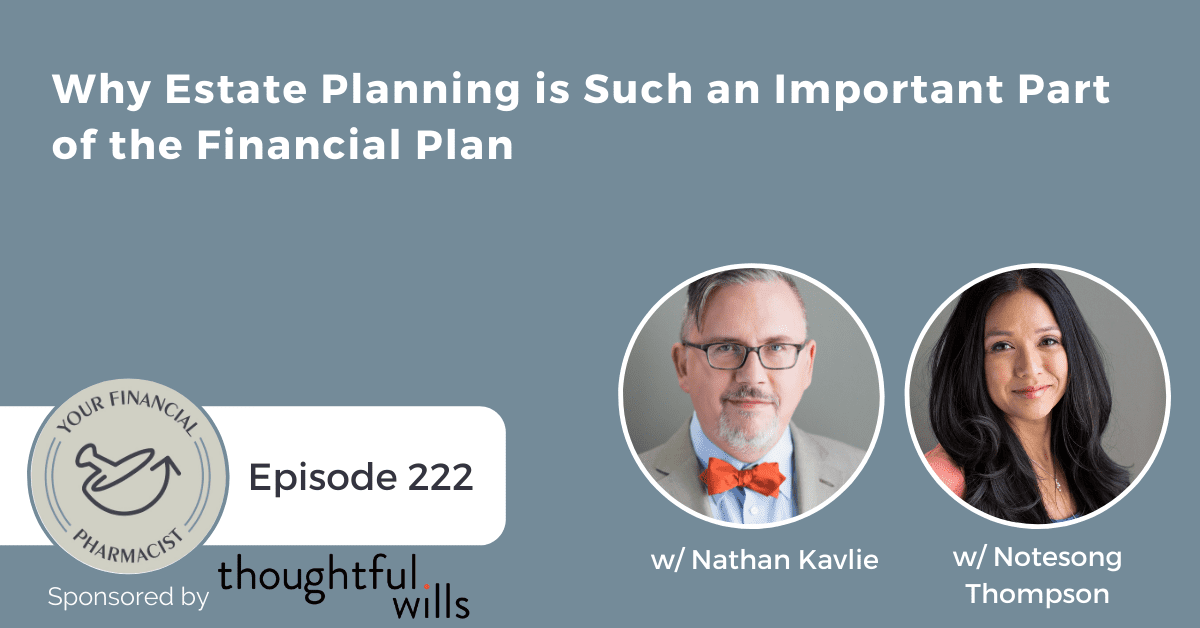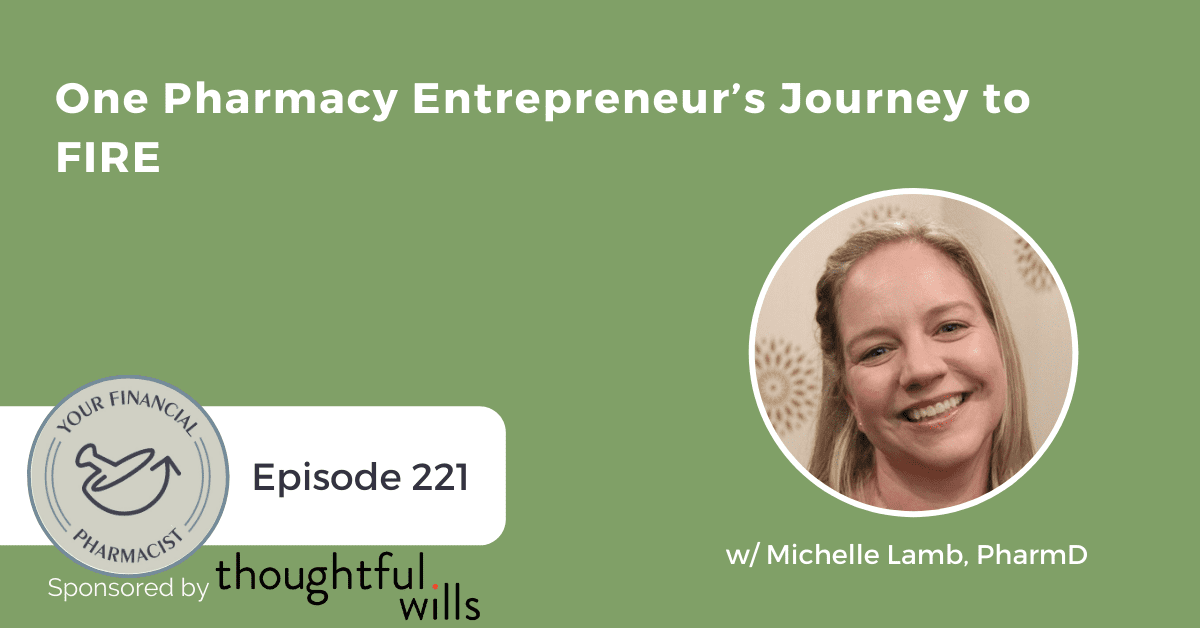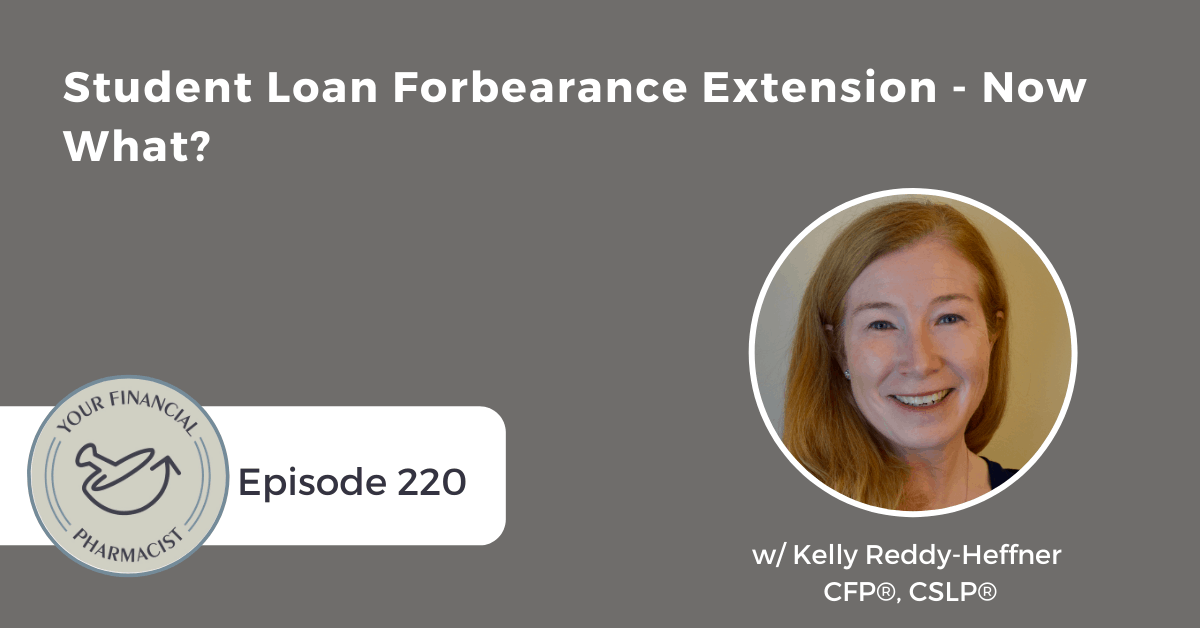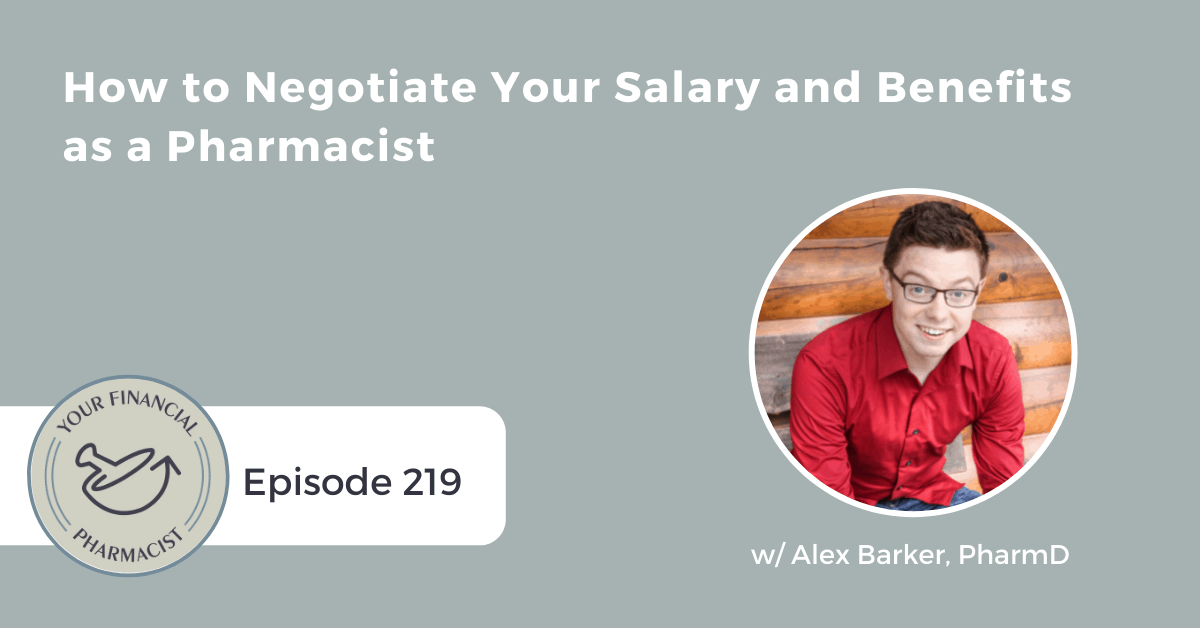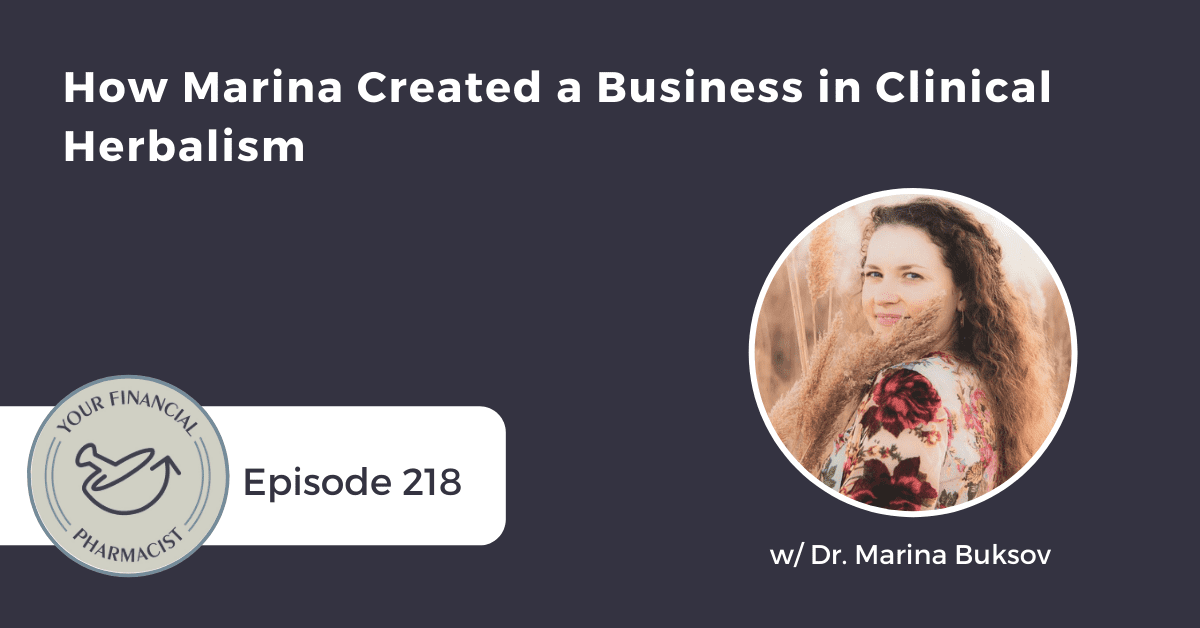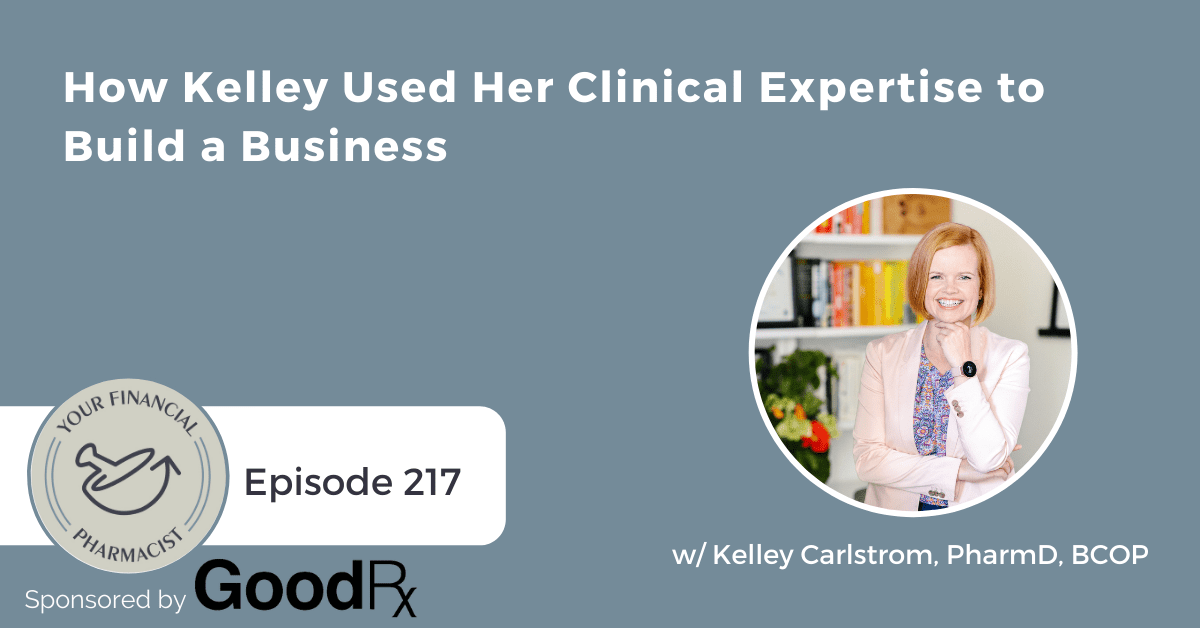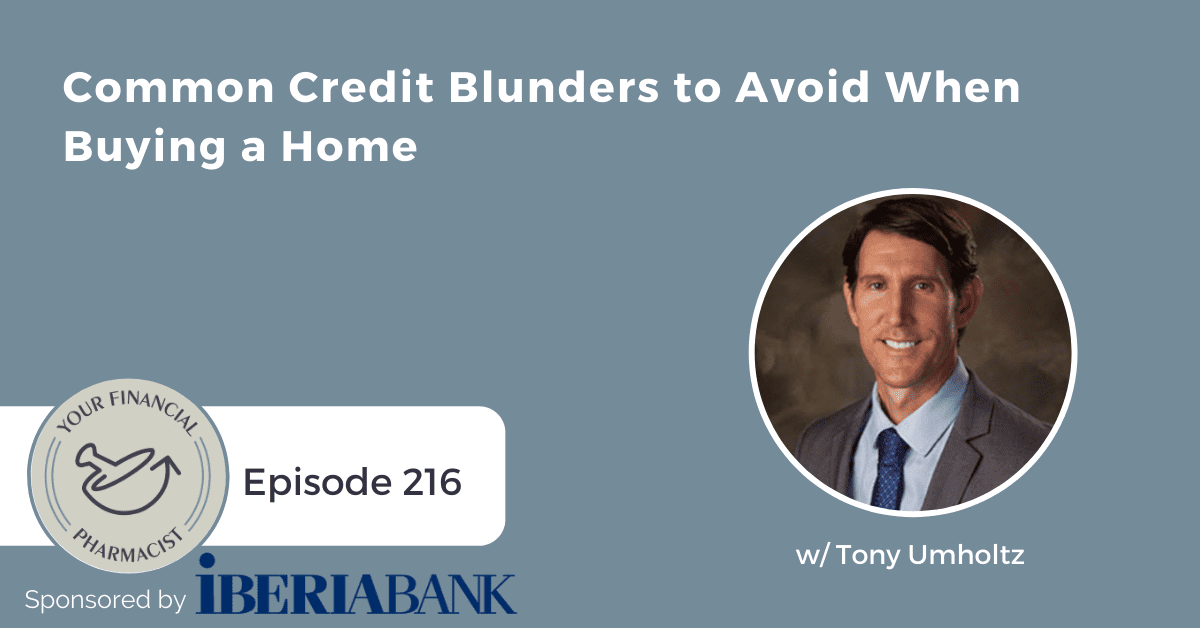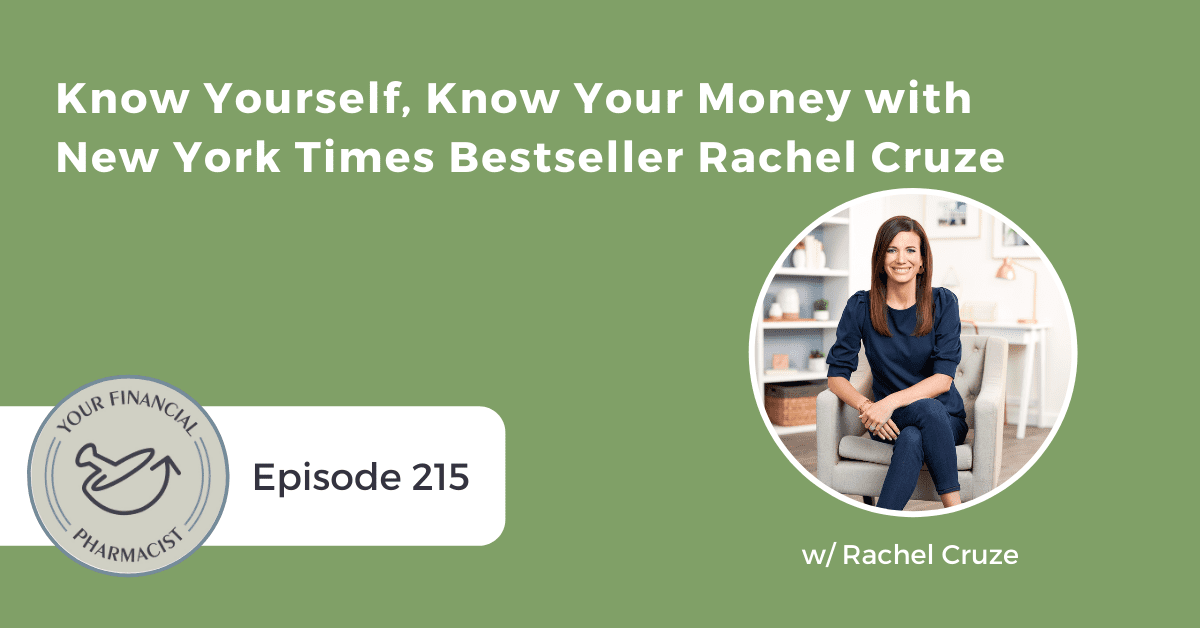How & Why One Canadian Pharmacist Paid Off $100K of Debt
On this episode, sponsored by Thoughtful Wills, Sachin Duggal discusses his career journey, how and why he aggressively paid off $100k in debt, and trends in pharmacy education and practice in Canada.
About Today’s Guest
Sachin Duggal is a clinical pharmacist and consultant practicing within the Toronto, Ontario area in Canada. Sachin’s current areas of practice are community-based with a focus in complex geriatric care, diabetes education, and hypertension management where he works with family physicians to optimize treatment plans. He also works as an Academic Detailer, engaging with physicians on the latest evidence in different disease states.
Sachin obtained his Doctor of Pharmacy and Honours Bachelor of Science degrees from the University of Waterloo and has gone on to work in a variety of practice settings including hospital, community, and family health teams across the province of Ontario in Canada.
As a recent graduate, Sachin has taken a keen interest in personal finance, building wealth, and optimizing student loan repayment using various financial incentives and products within Canada.
Summary
This week, Tim Ulbrich welcomes Sachin Duggal, a pharmacist from Canada who works as an Academic Detailer, to the show. Sachin discusses his career journey, how and why he aggressively paid off $100k in debt, and what trends in pharmacy education and practice in Canada are similar and different to those in the United States.
Financial freedom was a driving force in Sachin’s debt-free journey. He felt the pressure of student debt and didn’t like the feeling of debt looming over him. By contributing up to 70% of his income to education loan repayment, Sachin is now debt-free with maxed-out retirement investments. Now he is looking forward to his future, investing in real estate, and enjoying the feeling of making his money work for him.
Sachin shares his observations on the differences in the education system and trends in the current state of pharmacy in Canada compared to the United States. While many Canadian pharmacists take on a slightly lower student debt, there are additional educational benefits. Professional students may be eligible for a line of credit, as in Sachin’s case, which can be used to drive down student debt with some intentional financial moves. Sachin’s observations on trends include a downward trajectory on pharmacist salaries in urban areas, similar to that of the United States, based on the supply and demand of pharmacists. He shares that in more rural areas, the salaries may be more competitive. He notes, pharmacists in the United States may be less willing to work multiple part-time positions versus a single full-time opportunity due to the necessity of medical benefits. Universal health care in Canada permits relatively low-risk opportunities to piece together part-time jobs when full-time positions aren’t available.
Mentioned on the Show
- Create a Comprehensive Estate Plan with Thoughtful Wills
- Register for the “How to Get Started in Real Estate Investing” Webinar on October 12, 2021 at 8:30 PM ET
- YFP Real Estate Investing Podcast
- BiggerPockets
- Connect with Sachin Duggal on LinkedIn
- I Will Teach You To Be Rich by Ramit Sethi
- The Psychology of Money: Timeless lessons on wealth, greed, and happiness by Morgan Housel
- Beat the Bank: The Canadian Guide to Simply Successful Investing by Larry Bates
- Your Financial Pharmacist Disclaimer and Disclosures
Episode Transcript
Tim Ulbrich: Sachin, welcome to the show.
Sachin Duggal: Thanks for having me, Tim.
Tim Ulbrich: Well I really appreciate you reaching out to me via LinkedIn several months ago to provide some of the viewpoint of a pharmacist that’s working in Canada, a topic we haven’t talked about on the show, which is exciting. And during a follow-up call that you and I had, I really enjoyed learning more about some of the similarities and differences of the profession that we both love in pharmacy and some of those differences in Canada versus here in the States. And I’m grateful for the opportunity to share that information with the YFP community alongside your journey to becoming a debt-free new practitioner. So Sachin, let’s start with your background and work in pharmacy. What drew you to the profession? Where did you go to school? And what type of work are you doing now?
Sachin Duggal: Sure. So you know, initially what drew me to the profession was I was in high school, didn’t really — I knew I wanted to do a career kind of in healthcare — didn’t know exactly which avenue I wanted to go down. And being a relatively healthy kid, I kind of had a little bit of a health scare kind of in my senior year of high school. I had appendicitis, had kind of the first time I was exposed to the medical system to kind of that degree. And then you know, I was thinking in my head, ‘I’m missing all this school, I’ve got to apply to college’ — in Canada, it’s universities, but I guess the U.S. equivalent would be colleges. I’m like, ‘I’ve got to apply to all these universities, I’m missing all this school, I’ve got to kind of recover.’ And being able to interact with different healthcare professionals in that environment, for whatever reason, the pharmacist was kind of the one that I was most drawn to. And I think part of it was just that empathetic listening, just taking the time to kind of understand my concerns, kind of where I was. And then I dug a little bit deeper after I got home into the pharmacy as a profession and how much schooling it would require. And it just seemed like the fit that would work best for me.
Tim Ulbrich: And so that led you to the University of Waterloo. So tell us about when you graduated, when you got licensed, some of the early work that you did in long-term care and then the work that you’re doing now as an academic detailer.
Sachin Duggal: Sure. Sure. So yep, so it led me to the University of Waterloo. In Canada, there’s about 10 pharmacy schools. The University of Waterloo is one of two in the province I’m in, so Ontario is the province. It’s kind of the first co-op pharmacy school in Canada. So what that means is they have designated placements or placements to apply to within kind of the program in between kind of periods of studying. At the pharmacy school I went to, it’s a four-year program. It initially starts as kind of 12 months of pure school, so you don’t really get summers in those four years. It’s 12 months of school and then it’s basically four-month increments of school and then a placement or a job placement. What’s really cool is that job placements are — all the potential jobs are on a portal and they’re in completely different environments.
Tim Ulbrich: That’s cool.
Sachin Duggal: Hospital jobs, government jobs, you’ve got community jobs, outpatient jobs, right? And you apply to them and you interview for them. So it is a little bit competitive with your classmates or cohort, but really great experience and there’s always more jobs than I guess students, so you’re definitely going to be able to find something or find a role that hopefully is right for you. Kind of fast forwarding a little bit, you know, finished school, there’s a little bit of — the way we get licensed in Canada, we do the PBC, so it’s a little bit different than the U.S. But there is a bit of a lag time between when we graduate versus when they offer that exam. It’s about — you have like a four-month lull there. You graduate in August, you don’t write the exams until November. And in this four months, you have the opportunity to travel, work, take a break, whatever you’d like to do. For me, knowing that I was kind of looking all this debt, I was like, hey, I really want to kind of get a head start on this a little bit, so I ended up starting right away and just working, working in the pharmacy, getting that exposure, and it also provides you a little bit of practice for those boards, getting exposed to different medications, counseling, all that kind of stuff.
Tim Ulbrich: Yeah.
Sachin Duggal: You know, fast forward, get licensed — you don’t find out you get licensed until around Christmastime, so it’s kind of like the worst Christmas of your life or it could be a great Christmas present. So for me, it ended up working out great. It ended up being a great Christmas present and then in January, I ended up taking a job in long-term care. It was about an hour and a half from where I live. I live in a suburb outside of Toronto with about a million people. It’s interesting, so one of the biggest challenges at least I’ve found in kind of the Canadian marketplace is especially for new grads is it’s almost like getting your first job again when you’re 16 in the sense of everybody wants experience, but how do I get experience, like pharmacist experience, if no one’s going to give me a job? Right? So one of the compromises I made was hey, look, time is kind of the essence in the sense of paying off this debt, and I really want to kind of move on it. And one of those sacrifices I made was location. So I was willing to sacrifice location if the right opportunity kind of arose and I didn’t have to necessarily stay at home and stay within kind of the environment I’m comfortable in. So I moved about an hour and a half outside of kind of where I lived, a city of about 300,000 people, working that long-term care environment. I was kind of in charge of about 14 different nursing homes. I was working in clinical operations, which means I was kind of on the bench or kind of in the pharmacy. It was a closed-door pharmacy, so patients can’t walk in and out. We really just focused on servicing these kind of retirement homes and nursing homes. And I was kind of the pointman or kind of in charge of all the new clinical orders that would come through on a daily basis, probably had anywhere from 200-250 new clinical orders. And the way long-term care is set up is really interesting because you don’t learn a lot about it in school is the pharmacists there completely focus on clinical verifications. And what that means is you look at lab values, you look at the drugs being prescribed, and you look at what patients are on, their histories, and is this medication appropriate or not? And if it’s not, you kind of go through the process of getting things changed or making recommendations that may be a little bit more appropriate. You have a large team. So I had a team of about four licensed technicians that would do a lot of the refill requests and the repeat prescriptions and then a whole kind of army of assistants doing all of the order entering, so I didn’t have to handle the start-to-finish that you may typically see in kind of a retail environment. You know, I did that for about a year and we were getting close to kind of paying off all that kind of student debt and some of the things that I employed while I was kind of out in this community was, I mean, one of the big things was it’s a kind of a student city, so there was a big university there, I guess the U.S. equivalent would be like a college, out there. And I lived in student housing, paying about $500 a month to kind of live there really cheap. And then I also cooked large — basically I didn’t eat out very often at all. So I cooked a lot of meals myself, almost like I’m back in school even though I’m not, right? So I was living that kind of student life of just trying to save every dollar and trying to put as much of that paycheck towards the debt. And I threw about — on a biweekly basis — about 65-70% of that check towards that debt repayment.
Tim Ulbrich: Wow.
Sachin Duggal: So huge — basically, my car was fully paid off, didn’t have any debt from that perspective. I had basically apart from student loans, really didn’t have any other kind of debts to worry about. And I saved about 10%, you know, used about 65-70% on that debt repayment, about 20% was on living expenses like food, gas, rent. And then I took a little bit of a risk in not building that emergency fund necessarily right away, but I did try to pocket away about 5% every check or so towards that emergency fund. And you know, I really didn’t have, like I said, very many kind of expenses.
Tim Ulbrich: Right.
Sachin Duggal: No mortgage, right? No car payment. So my expenses were really low from that perspective anyways. That was kind of my time. I was there for about a year in that environment and then I was getting really close to paying off this debt and I was thinking, what are kind of the next steps and where do I kind of want to go from here, right? So I ended up taking a pharmacy manager position kind of closer to home, about 10 minutes away from where I was originally from.
Tim Ulbrich: Nice.
Sachin Duggal: Was able to negotiate a really great salary there as well. And then it was a Monday-Friday kind of 9-5 opportunity in a specialty clinic. And then everything was looking great, we had the balls kind of all kind of rolling, and then COVID hit, which kind of stalled that whole operation as a new pharmacy and a new pharmacy practice. When COVID kind of hit and everything just kind of locked down and shut down and you know, a lot of the physicians were working from home and had cross appointments in hospitals and everything was kind of sporadic. We lost a lot of that patient flow within the clinic, and it made it really challenging to keep kind of the pharmacy practice financially viable at the time. So in that instance, myself and kind of the team — it just kind of made sense to just kind of leave that opportunity on the back burner and it may be something we’ll revisit in the future. So now I was kind of stuck in a little bit of a limbo. And you know, I had opportunities. The fortunate thing about going to the university that I went to is those co-op experiences and being able to build that network and having kind of a couple of mentors and a couple of people that can really help guide me in the profession, especially — I’d only been about a year and a half out, right? So I had an opportunity from that point to really take a step back, take a little bit of a break, especially with COVID and seeing how impactful or how dangerous the virus was, right? At that time, we didn’t know a lot. This would have been about April 2020. Took some time and before I kind of jumped into my kind of next role — and that next role was taking a manager position in Toronto at a — basically, it was a pretty underserved community in kind of the northern end of Toronto. Again, another opportunity to be really resourceful and help these patients get access to care and to medications that may be challenging for them to get access to just with kind of some of the experienced I had and just knowing how the healthcare system works within the province. At that time, I saw an opportunity — this was where kind of the academic detailing piece comes in. I saw an opportunity that was posted in one of our — it’s like a Facebook group for our school and for any kind of job opportunities that have come up. And I had a previous preceptor that had done this role. So I reached out to them just to ask them about the role and I was like, this is really cool. I mean, I can’t believe you can kind of make a living basically looking at literature, looking at evidence, providing some of those resources to busy clinicians, so I can kind of explain what an academic detailer is briefly. But basically what we do is it’s a knowledge translation service, typically. So what we’ll do is we’ll pick a disease state. Maybe it’s a disease state that there’s been a lot of kind of evolution or changes, right? So for instance, diabetes.
Tim Ulbrich: Yep.
Sachin Duggal: In the last 5-10 years, there’s been a lot of changes in diabetes and medications that are used to treat the condition. So it’s an opportunity for us to look at the evidence or look at the literature, see which medication if there’s new ones, see where they fit within the whole kind of treatment algorithms, right, from a cost-benefit perspective as well as from a harms and benefits perspective. And then once we kind of as a team with myself and a team of five other pharmacists that kind of come together as well as some other people on the team that kind of gather some of the literature and some of these studies. And we sit there and we sift through the literature and we kind of think about some key points or key highlights physicians will care about, right? Say they’re strapped for time and they really want to know, OK, I’ve got five minutes, tell me what I need to know about this change. We distill those down from mountains and mountains of literature and then we have an opportunity to kind of go out in the field and talk to physicians. And the beauty about it is our academic detailing program is not industry-funded, so there’s no industry bias. It’s funded by the government, so the Ministry of Health. Our healthcare system is a public healthcare system for the most part. The government kind of funds this program knowing that there’s a lot of literature that states from when medications or algorithms change, for them to actually be able to maintain the practice can take anywhere from 10-20 years.
Tim Ulbrich: Yep.
Sachin Duggal: So there’s a big lag between fundamental changes or new breakthrough literature and actually seeing them implemented in practice for patients. That’s kind of the gap we try to fill. And the specific work we do is with family physicians, and we try to tailor every conversation to that specific practice, to their specific patient population, and work with them to see what we can do to help lubricate some of that transition and see what we can do to help them basically practice kind of the best available evidence we have in some of these different disease states.
Tim Ulbrich: Yeah, what a great use of, you know, a pharmacist skill set, expertise, and education. And I think the role that folks in the U.S. here will connect that to — also very different because you mentioned a publicly-funded healthcare system — would be an MSL position that is industry-funded. I do know a couple of pharmacists that work for the Veterans Affairs, VA, here in the U.S. that do something very similar. One of the things I love about your role, which is similar to what I’ve seen in the VA as well is a component of both practice and academic detailing. So you’re keeping your hand in practice while also providing the expertise in terms of evidence-based cost-effective prescribing. Sachin, at the risk of overgeneralizing an entire country of pharmacists, I suspect our audience is curious, as I was, to hear about some of the similarities and differences with pharmacy education and pharmacy practice in Canada compared to the U.S. And so let’s just start with debt loads. You know, a typical debt load here in the United States for a pharmacy graduate after 6-8+ of education, about $170,000 for the Class of 2021. So generally speaking, what were you seeing among your peers and graduates today when it comes to debt load?
Sachin Duggal: So from a debt load perspective, I believe in Canada, it is a little bit less than the U.S. or could be quite substantially less, depending on the school you go to. So typically on average, you’re probably graduating with anywhere in the ballpark of $100,000-140,000 of debt. Now, it just depends on the city you live in and the school you go to.
Tim Ulbrich: OK.
Sachin Duggal: So for instance, you live in Toronto and you’re going to pharmacy school in Toronto, cost of living is typically higher there versus where I went to in Waterloo or in the Waterloo and Kitchener kind of area, which is about an hour outside of Toronto. So it kind of depends on the school you go to, but I would say that would be kind of the range as far as the debt load you’re graduating with. Now, there are some opportunities in trying to help manage some of that debt load and there’s resources available to professional students within Canada. So one of them is the provincial loans. So in Ontario, there’s something called OSAP, which is a provincial loan kind of service. It’s also a federal loan service. So they kind of just mash it all together. A portion of it’s federal, portion of it’s provincial.
Tim Ulbrich: That’s interesting. Yeah.
Sachin Duggal: Yeah, so they don’t have separate applications for a federal one and a provincial one. They kind of just lump it all together. Now, that service is great and basically, you know, it’s an application process through the program you’re in, the school you’re in. Based on the program and the school, you go get basically that — and of course your own financial situation with your family and the money you make — they’ll basically spit out a number and be like, every term — a term here is about four months — so every four months, this is the money we’re going to spit out at you or we’ll give you. It could be like $5,000. It could be like $8,000. It could be more. It just depends on your situation. It is a loan, though. So it is money you have to pay back eventually. The beauty of applying to OSAP is even if you don’t need it out here, I would encourage you to apply as kind of being a student just because I think even if you don’t need money, there’s opportunities that open up where you’re able to get grants from the government as well for continuing your postsecondary education. Again, some of these grants, they range in value. It could be $500, it could be $1,000, could be more. It also opens up the opportunity at your own university to apply to bursaries. So bursaries are opportunities to just get, again, free money from your university to help pay for your education. But one of the qualifications typically to apply for those are you’re in need of some sort of financial assistance or you have some sort of OSAP application in progress or in student loans, basically.
Tim Ulbrich: And then in terms of repayment, you know, here — you and I talked a little bit about this — we unfortunately have a very complicated, overly nuanced federal loan repayment system, which includes about nine federal repayment options, we’ve got forgiveness, we have non-forgiveness, there’s of course private options, there’s income-driven repayment plans, there’s fixed plans. So you know, I think while that provides borrowers with a lot of options, as we’ve talked about many times on this show, sometimes that complexity prevents folks from really analyzing those options and determining which of those paths may be best for their personal situation. So when it comes to repayment of those loans, you mentioned both the more federal type and the provincial type, what does that look like? Is it a simplified repayment option in Canada? Or what does that repayment path look like?
Sachin Duggal: From my understanding, it’s a pretty simplified process. So if you’re going down the kind of, the student loan perspective, OK, so you graduate. Let’s just say you have $100,000 of debt. Now a portion of the debt is going to be a — and you can see it all broken down in your, like on the OSAP website in your portal. But you’ll see like, let’s just say $35,000 is federal and the other $65,000 is coming from a provincial student loan. Their interest rates are different. So I would just say the interest rate is anywhere from 5-7%, depending on if it’s a federal portion or the provincial portion. So when it comes to interest, when you’re looking at kind of the student loan that you’ve taken out, once you graduate, the school kind of notifies the student loan office that, hey, they graduated, you can kind of start that kind of clock. And basically, interest starts accruing from the moment that you graduate. However, you don’t need to make any payments on your loan, your student loan, for six months. It’s called like a six-month grace period. It gives you some time to get your kind of feet under you, find a job, figure out your situation and how you’re going to begin to I guess start repaying these student loans.
Tim Ulbrich: And when it comes to the profession, the market, you know, as it stands in Canada, you know, it’s well known here in the U.S. that again, generalizing for the sake of the conversation, but there’s some downward pressure on pharmacists’ salaries. We have supply of pharmacists and new graduates that’s been going up, so that has led to — again, very much depends on the field — but it’s led to an overall flattening, in some cases a reduction and pressure down, on salaries. And so we’ve got this debt load going up, and we’ve got this salary component that’s flat and in some cases decreasing, which obviously presents a financial challenge. So when it comes to the practice of pharmacy in Canada, what types of trends are you seeing that do or don’t align with what we’re seeing here in the U.S.?
Sachin Duggal: Yeah, so a couple trends that I’m seeing, but I think the U.S. and Canada are very similar situations when it comes to kind of pharmacy and the profession currently. One of the main things is currently, in some of the more urban areas, you know, salaries have been driven down pretty substantially from where they were kind of in the mid-2000s. Part of that is just, again, like you mentioned, that supply-demand piece. There’s just a lot of pharmacists out in urban areas, and the demand — the demand is there, but it’s just not quite where you’d want it to be in order to get those salaries a little bit higher. When you venture a little bit outside of kind of some of those urban areas and go to some of the smaller cities and even towns, I mean, the salaries are still very competitive and even in some cases, depending on just where — how far out you’re willing to go — you can really get, you can really have some good leverage in negotiating a good salary. Other trends I’ve kind of seen or something else I’ve kind of noticed — and part of that kind of lends to pharmacists who are willing to be a little bit more flexible and see if they think this lifestyle is right for them is there’s a lot of part-time opportunities. And there’s a lot of opportunities to blend multiple part-time opportunities to get that full-time equivalent. And I think that avenue, although it may not necessarily come with benefits and some of the other things that you may want from a stable kind of career, if salary is kind of a main kind of point for you and you’re like, hey, I’m relatively young, healthy, we have a public healthcare system, if I get sick, I’m taken care of, right, I don’t really need — you know, maybe I go to the dentist a couple times a year just for a cleaning, like everything’s pretty good, right, like I don’t need some of these other benefits, then maybe pursuing an opportunity or multiple part-time opportunities to get that full-time equivalent may lend well to negotiating a good kind of compensation package.
Tim Ulbrich: I think that’s a really interesting thought. And I will say, we do see I think some graduates that are taking that approach, partly out of need — maybe there’s not an offer for full-time — partly out interest, you know, two different opportunities that they want to explore past a little bit further. The challenge we have here, of course, is that healthcare benefit, right, and other benefits. So unfortunately, healthcare and purchasing that independent of an employer is definitely a pressure point. But I think we do see new graduates that are taking that approach, and certainly that can be viable. Sachin, when it comes to your own debt-free journey and some of the work that you’re doing now to really accelerate your financial plan, you mentioned that a typical graduate in Canada might have somewhere between $100,000-140,000. You know, you mentioned earlier that you went down this path of very aggressive debt repayment, you know, upwards of 65-70% of your salary that you’re putting toward your student loans, decreasing your expenses. So what was your debt position, No. 1? And No. 2 is what was really behind that goal of aggressive debt repayment? You know, why did you really want to press that forward, perhaps at the expense of other goals that you had in mind financially?
Sachin Duggal: For me, I think the No. 1 motivator was you’re in school — so I was in I guess from the start of university into graduation from pharmacy school, about a six-year process for me. And you know, the whole time, you’re just getting more and more in debt, right, trying to just live within your means comfortably and know that you kind of have some of that I guess that loan money in case you need it for emergencies and of course paying for your tuition and everything like that. But part of the journey for me was I didn’t like that feeling. I just didn’t like the feeling of being in mountains and mountains of debt that can’t be leveraged, right? Like student debt is not really, you know, it’s not a mortgage on a house, right? It’s not an asset, right? So it’s just kind of this debt that kind of just looms over you, kind of just sitting in the background like, ‘Hey, don’t forget about me. You’ve got to pay me back one day.’ And I just really didn’t like that feeling. And the idea — once I graduated, I went from making very little money in some of those co-op positions to now being able to make a pharmacist’s salary and kind of seeing those paychecks flow in, it really got me thinking, OK, this is a lot more money than I’ve kind of ever seen in my life up to this point. Like I need to make sure I set myself up so that I don’t ever have to feel like I’m in a position where I need this paycheck or anything like that. So that idea of freedom and working towards that was the kind Goal No. 1 for me in my life, right? So I looked at that debt and I went, OK, this is not serving me in any way, right? How can I aggressively pay this off? And one of the big strategies I used once I kind of fundamentally made that decision and one thing I recommend to some of my friends when they’re at a fork in the road, right, and they’re kind of like — for me, it was do I pay this debt off very aggressively or do I pay it off a comfortably kind of over x amount of years and save up for other things? And for me, I just kind of sat in a coffee shop and kind of, you know, I was like, OK, I’ve got a little piece of paper, I’ve got one side of this fork and I’ve got the other side of the fork, and I literally went through the pros and cons of each, right?
Tim Ulbrich: Yeah.
Sachin Duggal: And for me, it just stuck out that freedom piece on being debt-free, really having very little expenses, being able to kind of do whatever I wanted — if I wanted to go on a little bit of a vacation, right, I could. I didn’t have to worry about that paycheck-to-paycheck situation. And that really just stuck out to me. And at that moment, I was kind of committed to paying it off. And from that moment, I kind of looked at all the resources available to me and one of the big resources was leveraging my professional student line of credit. So I haven’t mentioned kind of here yet, but in Canada when you’re in professional school — or specifically at least I can speak for Ontario — when you’re in a professional program like dentistry, medicine, pharmacy are kind of the main examples, banks are willing to kind of offer you a line of credit that’s given to you in increments based on your successful completion of studies like —
Tim Ulbrich: Interesting.
Sachin Duggal: Basically, they’ll give you $30,000 per year. Once you’ve proven that you’ve completed Year 1, you haven’t failed, you haven’t flunked out, they’ll unlock the next $30,000. Once you complete Year 2, just shows proof you’re moving onto Year 3. The proof is really simple. It’s just kind of your schedule that you’re in third-year classes. And they’ll unlock another $30,000. So pharmacy school specifically, the major banks, they may have their own kind of rates on what they offer, but the one that I went with offered about $120,000 over the four years, unlocked in $30,000 increments with an interest rate of prime. So for us in Canada, the prime interest rate time I think was — it was around 2.2% or 2.25%.
Tim Ulbrich: Nice.
Sachin Duggal: Much lower than student loans.
Tim Ulbrich: Student loans, yep.
Sachin Duggal: Yeah, so an opportunity right there that I saw was OK, look, student loans, I’m not getting any more student loans. It’s just going to sit there. It’s going to have a much, much higher interest rate. You know, once I graduated, I really started dipping in that line of credit and just thought, let me just pay off these student loans with my line of credit. Much lower interest rate, right, in paying off the line of credit with the bank as well as you get to build your credit score as well. You’ve got a big loan here, you’re paying it back. With the student loans, you may not necessarily be able to build I guess as good will with the bank and kind of show, hey, I can pay off a large amount of debt in a reasonable amount of time.
Tim Ulbrich: Yeah. That’s really interesting. I’m not aware, Sachin, of anything we have like that here in the U.S. Maybe I’ll stand corrected if a borrower lets me know something or perhaps there’s a unique situation here or there, but makes sense, right? I mean, most of our federal loans, you know, rough numbers, looking about 6%, many for pharmacy school outside of this time with the CARES Act and the pandemic and the administrative forbearance is unsubsidized. So makes a whole lot of sense in that strategy. Is that a widely-known strategy? Or is that something that you were able to crack the code on, you know, in terms of when you had that day at the coffee shop and not as many folks know about that?
Sachin Duggal: I would say like a handful of people in the school definitely know about it, at least when I was going through pharmacy school. So this would have been 2015, around that time. I think the program, at least from what I’ve seen in recent years, has been a lot more aggressive with different banks in the sense that everyone’s trying to I guess capture the professional students and providing that kind of service or kind of that option, right? At the time, there was really only one or two banks that understood the pharmacist, the potential salary, right, the safety of that kind of — giving up that kind of money to a professional student, right? I think now, there’s a little bit more of an acceptance with some of the other banks after some of the success of those that kind of pioneered or started it.
Tim Ulbrich: It makes sense, you know. Here, the banks are very much, for good reason, interested in health professionals but long-term relationships, right? Purchasing a home, eventually you might have a business, a line of credit, perhaps you do investments, you know, which wouldn’t necessarily be our choice, but that’s an option of where folks may go to do other things related to the financial plan as well, so they’re very much looking at that from a long-term relationship with an individual who has a good — in theory, a good financial trajectory that’s ahead of them. Sachin, were there specific resources, books, podcasts, blogs, you know, things that were really helpful and motivating to you in your own personal journey?
Sachin Duggal: For sure. So one, of course, was the YFP podcast. I discovered it close to when I graduated. I think it was around probably January of — like around when I got fully licensed. And I was staring at these biweekly paychecks like oh my goodness. Like I need to save this or invest this or pay off — I need to figure out what I’m doing with this stuff instead of having it just sit in my bank account, right, and not working for me. So YFP podcast was huge at the time. And you know, it’s still a great resource and I still listen to it and see what kind of episodes and I love the evolution and the trajectory you guys have taken. Some of the books that were really impactful for me, No. 1 — and it’s a common book I think that you’ve talked about was “I Will Teach You to Be Rich” by Ramit Sethi. That’s a huge book in the sense of there’s one thing that always sticks out to me, and I’m going to butcher kind of the quote, but he basically says, you know, cut back frivolously on the things you don’t care about and spend kind of extravagantly on the things you do care about, right, or you do want. For instance —
Tim Ulbrich: The money dials. Yep. I love that.
Sachin Duggal: Yeah, yeah. So it’s, for instance, like I’ve got the same laptop I’ve had — the personal laptop that I’ve had since 2012. Don’t really care about upgrading it, right? It’s been a decade, but it still works fine. But if I want to go out and eat and have a good dinner, I don’t want to feel guilty about that. I think setting those money dials and setting that up for yourself and being comfortable with that is huge. Another really good book was just “The Psychology of Money.” It’s by Morgan — I think it’s Morgan Housel.
Tim Ulbrich: Yep. Right.
Sachin Duggal: It’s basically a book about just our relationship with money, and this goes back to what I was talking about with — you know, as a student without very much money going to a pharmacist, right, with some money and how that relationship should evolve and should mature and should change and as you get older and get some responsibilities as well in your life. I thought that book was really great. And the last one for my Canadian listeners I have to mention is a really interesting book. It’s specifically on Canadian finances. It’s called “Beat the Bank.” Yeah, it’s called “Beat the Bank” by Larry Gates.
Tim Ulbrich: OK.
Sachin Duggal: It’s a great book on — so he’s a — basically, our equivalent of Wall Street is kind of Bay Street in Toronto. Let’s just call it Wall Street, right, for all intents and purposes. But basically, he was a big hotshot banker for one of the big banks out in Toronto. And he just saw how some of the bank would leverage the average Canadian and he saw an opportunity there to kind of write a book about some of the things Canadians should kind of look at and be cognizant of when you’re kind of working on that financial freedom journey or saving and investing. And he kind of breaks it down to a really easily digestible book on the different avenues of investing and what row advisors are and all those fundamentals. So I think it’s a really great fundamental book if you’re just getting started with investing.
Tim Ulbrich: Appreciate the recommendations. We’ll link to all three of those in the show notes, “The Psychology of Money,” “I Will Teach You to Be Rich,” and then “Beat the Bank.” I’m going to have to bring myself up to speed one, because I’m really curious, two, one of my boys wants to move to Canada. So I feel like I’ve got some homework to do to be able to help him in the future. Great stuff. You know, one of the last questions I wanted to ask you is we don’t talk enough, I don’t think, you know, as we do stories like yours where we share a debt-free journey, we don’t talk enough about that life after debt-free. And one of the things I felt in my own journey is that, you know, I had always the debt being paid off as somewhat of a finish line in my mind. But it very much is just a starting point. And you know, once you get to that position, then it’s like, alright, what’s next? What are the goals? What are the plans? So as you went through this very aggressive debt repayment, putting away 65-70% of your salary towards the debt, here you are, obviously in a good financial position with a strong foundation going forward, if you look ahead over the next 3-5 years, what’s happening? What’s the priority? What’s the goals now that you’ve got this debt behind you?
Sachin Duggal: It kind of goes back to that little fork in the road, right? I’ve been really trying to has out kind of the next steps and where I want to go. And one of the big pieces is owning a piece of real estate. It’s just been really challenging with where the market’s at right now and kind of seeing how that evolves and where that goes. But for me right now, it’s kind of staying the course and continuing to invest. So a lot of my money now goes into investments. You know, I’ve maxed out kind of our equivalent of kind of that Roth IRA and 401k as well. So our equivalents are kind of maxed out. It’s really just kind of seeing where the opportunities are. I think especially with the pandemic, it’s almost like — I’ve kind of never seen such a bounceback in the economics so quickly after I guess something that would be considered kind of a recession, right? When you look at kind of where the stock market was initially when the pandemic hit and where it is now, it’s crazy. It’s only been a year and a half. So I think right now, it’s just investing, looking for an opportunity to invest in real estate that makes sense. And then kind of going from there, I think the most important thing is just not letting your money or that paycheck kind of sit in your bank account and kind of die or lose to inflation. Have that money working for you in some sort of avenue.
Tim Ulbrich: And that’s what I love about the intentionality of what you shared. And I’ve heard among others as well is, you know, if we think about the debt-free journey for some just being the starting point, you’ve got years and repetitions of behaviors now, right? So you’re obviously not forever going to be living on the low expenses that you did. But you’ve done that hard work, you’ve got the mindset. And now it’s about OK, how do I be more opportunistic in terms of growing wealth, taking those next steps with investing in real estate and other goals that you’re going to have in the future. Greatly appreciate, Sachin, you coming on the show. Loved this conversation, learning more about what some of our pharmacy colleagues in Canada are facing and some of the opportunities. And I’m hopeful that not only your peers in Canada will find this helpful but also the YFP community and pharmacists that are practicing here in the U.S. So again, thank you for your time and for coming on the show.
Sachin Duggal: Thanks for having me, Tim. I really appreciate being on and looking forward to more great episodes.
Current Student Loan Refinance Offers
[wptb id="15454" not found ]Recent Posts
[pt_view id=”f651872qnv”]

